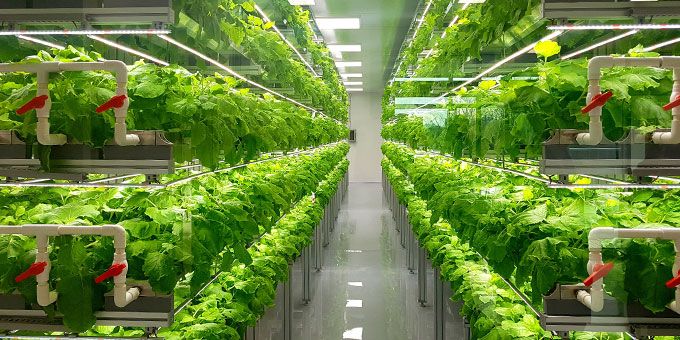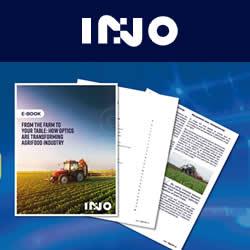The average lighting rebate outside of horticulture is typically in the $10,000 to $20,000 range, while the average horticulture rebate is more than $150,000—with some exceeding $1 million.
 Horticultural Energy Efficiency
Horticultural Energy Efficiency

Q&A with Dylan Collins, the CEO | Green Rebates
Tell us about yourself and Green Rebates.
I am a passionate and ambitious individual who loves guiding whitewater rafting trips and doing anything outdoors. I was raised in the Pacific Northwest by hippies who instilled in me a respect and appreciation for sustainability and the environment. Over my career, I have become an expert in horticulture, lighting, efficiency and rebates. I started Green Rebates not only to leverage those skills but to raise awareness for the amazing and grossly underappreciated opportunity rebates represent to the horticulture industry.
Green Rebates is an energy efficiency company that specializes in energy rebates for horticulture. Collectively, our team has over 50 years of experience across horticulture and rebates, which is a level of expertise you won’t find anywhere else in the rebate space. What we do is help growers, suppliers and rebate program managers navigate the ever-changing administrative landscape surrounding horticultural rebates. Our goal is to make sure that growers get the biggest rebate possible, and to make the process seamless and hassle-free for all parties involved.
What is the importance of energy rebates and incentives to the horticulture industry?
Energy rebates are more important in horticulture than any other industry. For other companies that could be eligible—a gas station or a hospital, for example—most rebates would likely have a negligible effect on their bottom line, and little-to-no effect on the quality of service they provide their customers. Because indoor and greenhouse grow environments are so dependent on lighting, it has a huge impact on production and quality. The money involved makes an even bigger difference, especially with high energy costs and uncertain economic markets leading to tighter bottom lines for many growers. The average lighting rebate outside of horticulture is typically in the $10,000 to $20,000 range, while the average horticulture rebate is more than $150,000—with some exceeding $1 million.
What specifically does Green Rebates do for growers, and what’s your vision for the company moving forward?
We put money in their pockets, with no upfront or out-of-pocket costs, to help them pay for new grow lights and equipment. As a result, we help growers become more profitable and sustainable, lower their operational costs and install better equipment to improve the quality of their grow.
Our vision moving forward is to continue to identify each and every opportunity available to increase efficiency, sustainability and profitability for growers—through rebates, incentives or other mechanisms. This will expand our ability to support our partners, programs and customers with a more robust portfolio of cash-positive services.
How are market conditions changing growers’ dependence on energy, and impacting their ability to grow sustainably?
Rising electricity costs are eroding margins across the board, putting significant pressure on growers to be more sustainable and adopt more efficient practices and equipment to stay competitive. With this type of market, growers who don’t have the capital to make much-needed improvements to their operations for efficiency will get strangled out of the market. Rebates can be a lifeline for these growers, who want to do the right thing and grow more efficiently, but need financial support to help them do so.
What major pieces of advice would you give to any grower who wants to maximize their profits and minimize their carbon footprint?
Call us. No, seriously. In some cases, you won’t even need to do anything to get a rebate check, because you’ve already qualified. In California and Oregon, many growers don’t know they qualify for rebates for heat curtains, shade cloths and light deprivation curtains that they have already installed! With a quick phone call, we can help growers identify which rebates they may already qualify for, and build toward additional efficiency upgrades and more lucrative incentives.
One piece of advice I always share with growers is to plan ahead. When you treat rebates as a secondary factor to consider down the line, you’re leaving money on the table. Start your planning process by consulting with rebates experts to figure out exactly which steps you should take to maximize your rebates and incentives. This simple change can completely change your company’s trajectory, ensuring profitability while increasing your sustainability and reducing emissions. Efficiency pays, it really does.
Why is sustainability important to you and Green Rebates? What specific levers are you able to pull to help growers act more sustainably?
Pragmatically, sustainability should be important to everyone. Electrical grids are overloaded, and communities all over the country are facing issues with water supply. Finding a way to operate more sustainably is a necessity for the country to continue to grow and prosper. Leveraging the power of rebates and incentives to help growers obtain the most efficient tech and equipment possible is the number one lever that Green Rebates pulls.
How do forms of renewable energy fit into the equation for Greenhouse growers?
There is a lot of new and exciting technology in this arena. Solar power is becoming more cost-effective and increasingly viable, while other cogeneration systems, battery banks and advanced controls are creating financially beneficial opportunities to shift loads and demand response practices. Electric utilities and government agencies recognize the value in rewarding growers for adopting cutting-edge efficiency technologies—creating rebates and incentives that make those technologies much more accessible.
What are a few major misconceptions growers have about rebates, and how do you address them?
Growers have a lot of misconceptions about rebates—too many to address—but here are a few of the most critical:
- You always need pre-approval: This is not always true—we’ve been able to help many growers connect with rebates for previously installed equipment.
- Rebates are too complicated and time-intensive to be worth it: This might be true if you tried to handle everything on your own, but the financial incentives can be incredible when you work with a partner, like Green Rebates, who can cut through the red tape and connect you directly with your optimized cost-savings.
- You should let your supplier handle your rebate: I cannot recommend this. It’s tempting to work with a company you already know, but these companies are not rebate specialists, and their interests may not align with yours. A lighting company, for example, may not be able to help you effectively optimize rebates for your dehumidifiers or HVAC system.
- You should work with the utility on your rebate yourself: Would you go to the IRS for help on your taxes? That’s what I thought.
The content & opinions in this article are the author’s and do not necessarily represent the views of AgriTechTomorrow
Comments (0)
This post does not have any comments. Be the first to leave a comment below.
Featured Product

